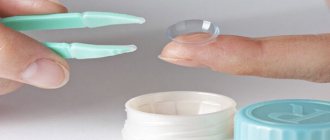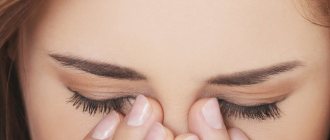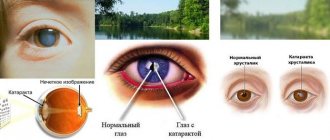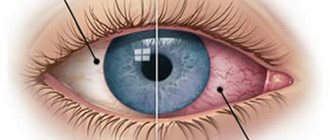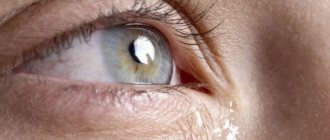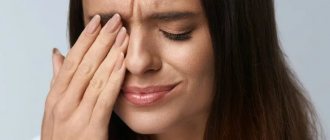How we yawn
Everyone loves to yawn. This process is not always appropriate, but after it some relief is felt. Yawning itself performs a very important function. It puts the body into action, invigorates, and prevents a person from falling into an uncomfortable state. It is believed that a yawn is a type of deep breath. In the process of yawning, all body systems are involved: musculoskeletal, cardiovascular, nervous and respiratory.
The act of yawning is similar to breathing. The air passes through the upper, then lower respiratory tract, enters the alveoli, where gas exchange takes place, and is exhaled.
But it's not that simple. As mentioned above, this is not a simple breath, but a very deep one. To implement it, you have to use a lot of resources. For example, we stretch while yawning. Stretching helps you breathe deeply and expand your chest. The alveoli straighten, allowing the blood to be enriched with more oxygen. Many have noticed that yawning helps with stuffy ears; with normal inhalation there will be no such effect. When we yawn, many facial and masticatory muscles are involved.
Yawning is a process that is poorly controlled. Often we cannot stop it in any way, which, in general, is not worth doing, because yawning can be caused by a number of reasons and does not always mean that a person wants to sleep.
How we cry
The secretion of tears is also a complex mechanism.
The lacrimal glands, numbered 1 in the figure, are located just above the outer edge of the eye. Through the ducts, the tear enters the eyeball, over which it is distributed evenly with the help of the eyelid, according to number 2 in the figure. There are tear points at the inner corner of the eye, number 3 in the picture. They lead to the lacrimal sac, numbered 5 in the figure, which communicates with the nasal cavity through the nasolacrimal duct, shown in the figure 6. Excess tears are removed through it, so when we cry, we need a lot of handkerchiefs.
Tearing not only moisturizes the eye, but also helps remove foreign particles, and tears also remove certain hormones from the body.
The orbicularis muscle is located around the eye. It contains the orbital, age-old and lacrimal parts. The lacrimal sac is responsible for the expansion of the lacrimal sac when we squint our eyes.
Keratitis
Symptoms of inflammation of the cornea are constantly watery eyes, the sensation of a foreign body in the eyeball, intolerance to bright light, and closing of the eyelids. Keratitis requires immediate contact with an ophthalmologist, since advanced infection can damage the cornea and spread deep into the eyeball.
How are these processes interconnected?
Why do tears flow when you yawn, because your eyes and lungs are so far apart? But these processes influence one another.
When yawning, a person needs to take in as much air as possible. With a wide yawn, the lower jaw drops, the corners of the lips stretch, and the upper lip can rise. The neck and facial muscles are responsible for this. The muscles on the face lie under the skin; when some are tense, others can also become tense; many different muscle groups are involved.
When yawning, our eyes involuntarily close and we squint. With a strong yawn, the facial muscles of the face tense especially strongly, and most of them are involved. When muscles contract, they somehow affect the tissues and formations located next to them. With strong muscle tension, the lacrimal gland becomes as if compressed, which is why tears flow when you yawn.
Hiccups, yawning, sneezing, tears, stretching... What does the body want to tell us in body language?
Photo: GLOBAL LOOK PRESS
This happens to us! And we don’t even think about why? For example, we lie in the bath, get wet, and at this time our fingers become wrinkled. Or do we hiccup, drink water in small sips and don’t know why? All our “whys” and “whys” are answered by an excellent cardiologist, cardiovascular surgeon, Doctor of Medical Sciences, Professor of the Department of Hospital Surgery of the Faculty of Medicine of the People's Friendship University of Russia Alexey ZUDIN. So, what “words” do our bodies use to talk to us?
1. Yawn
The cause of yawning is hypoxia, which is when the brain does not have enough oxygen. That is why we need not a simple, but a forced inhalation (strong and deep); during a yawn, we inhale much more air than during a normal inhalation. The airways open and a large amount of oxygen quickly enters the blood. Why do we yawn when we want to sleep and when we are just tired? Due to fatigue, excess carbon dioxide accumulates in the tissues, the same hypoxia, again oxygen is needed. We also yawn when we are bored and need to do something we don’t want to do. And this is understandable. When we work “through not wanting”, we get tired much faster. And again fatigue and yawning to get oxygen.
Do you know why yawning is “contagious”? Someone yawned, and everyone began to yawn after him. Psychologists say that we inherited this “infection” from our ancestors; everyone has yawned as if on command since ancient times, when a tribe of primitive people went to bed at the same time. True, this is still a theory.
2. Sneeze
Dust accumulates in the nasal cavity, the mucous membrane dries out and becomes irritated, the nerve endings are irritated and a “sneeze” occurs - a sharp exhalation that helps to “throw out” everything unnecessary from the nose so that no debris gets into the nasopharynx and further. Defensive reaction. By the way, the speed of exhaled air during sneezing is 130 km per hour. If a person sneezes two or three times in a row, it’s okay. But if more than 10 times in a row, this is already a problem. Most likely, there is swelling in the nasal mucosa. The body perceives swelling as an irritant and tries to get rid of it, “sneeze it out.” But the swelling does not go away. If you sneeze many times in a row, try using vasoconstrictor drops, they will help relieve swelling.
3. Let's stretch
At least we can control something! We stretch at our own discretion. Why does such a desire arise? This is how the body prepares the muscles for physical activity. Kneads, warms up. Have you been following cats? They never get up immediately after sleeping. They stretch all their paws first to restore circulation before taking a step. Stretching not only “wakes you up” in the morning. Due to fatigue, lactic acid accumulates in the muscles, and in order to “disperse” it, you need to stretch, stretch the muscles, just like after a workout.
4. Hiccup
Little children hiccup when they are cold, when they are thirsty, or when they have eaten too much. In adults, hiccups are a signal that something is wrong in the digestion. It happens that hiccups begin in those who have drunk something strong. Most often we hiccup when we eat too much. And not just a lot, but greedily and quickly. We grab large pieces, chew poorly, and thereby irritate the vagus nerve. This is one of the cranial nerves, it runs from the brain along the pharynx and esophagus to the diaphragm and stomach. When large pieces of food go down the esophagus, they irritate the vagus nerve, and it sends signals to the muscle fibers of the esophagus and stomach, causing spasms - “hic”, “hic”. With the help of these spasms, the body, as during sneezing, tries to get rid of swelling of the esophageal mucosa.
How to beat hiccups? Depends on the reason. Drinking cold liquid in small sips will help prevent “drunk” hiccups; holding your breath can also help prevent overeating hiccups. Both methods inhibit irritation of the vagus nerve. But you definitely shouldn’t scare someone who hiccups! This method of treating hiccups is not exactly approved by doctors.
5. When we fall asleep, we startle
Sometimes we manage to feel this when, falling into sleep, we suddenly wake up sharply because our arms and legs twitched on their own. This is normal, although inconvenient. The fact is that breathing calms down, the pulse slows down, the muscles relax, and the body seems to be afraid that we might fall asleep... completely. And with this very “shudder” the brain wakes us up in order to resume normal breathing, so that it is not too rare. This is constant control.
6. “Old fingers”
When we lie in the bath or wash something for a long time, the pads of our fingers become wrinkled. Children love to look at drawings on “old fingers.” There is a “legend” on the Internet that says these patterns appear on the skin so that the toes and hands, when surrounded by water, become more tenacious and do not slip - it’s like the tread on winter tires for cars, for better grip on the road. In fact, everything is much simpler. The skin on the balls of your feet and heels is four times thicker than on other parts of the body. Therefore, it absorbs water better and “swells”.
7. Goosebumps
“Goose bumps” occur when we are cold, but it also happens that music or a movie impresses “to the point of goosebumps.” Everything is explained simply, and again by the heritage of the ancients. They, as we remember, were hairy. And when our ancestors were cold or scared, the fur on their bodies stood on end (for warmth, fluffiness and intimidation). The fur has fallen out over the centuries, so now we just have goosebumps standing on end.
8. Tears
Many people know why tears flow when a speck gets into the eye. This reflex washes away dirt and protects the eye from scratches and damage. But scientists still haven’t figured out why we want to cry from pain and emotions. There are legends that tears relieve pain and reduce tension in the cerebral cortex, but... so far these are just guesses.
9. Turning red
The blood vessels dilate and the skin turns red. If it's hot, it comes from the temperature. But it also happens from shame, joy, love, and so on. Vessels really respond to emotions. Emotions are a change in the concentration of hormones in the blood (including adrenaline), in response to this change the blood vessels of the skin dilate, and we blush. Some people blush more, others less - it all depends on genes.
The same mechanism works when we turn pale, only in this case the blood vessels contract.
10. Let's sweat
Sweating is a normal reaction to heat. To cool the skin, the body secretes fluid, it evaporates from the surface of the body and takes excess heat with it.
Causes
There may be several reasons why tears flow when you yawn. For example, excessive lacrimation can be caused by blockage of the nasolacrimal duct, inflammation of the lacrimal sac, and a number of other reasons. The overall production of tear fluid increases, which is why tears flow when yawning.
Depending on the condition of the lacrimal glands, different people produce different amounts of tear fluid when yawning. If the gland is to some extent elastic and strong, then the influence of muscles on it is insignificant. However, the weakened gland is strongly compressed, so there is a profuse secretion of tears.
This can also be caused by weakness of the lacrimal gland or, conversely, by very active yawning, in which many muscles are involved.
It is completely normal for tears to flow while you yawn. Why some people consider this strange is unclear, because it is the same natural process as stretching, the sound of a yawn, or closing the eyes.
If the issue is caused by a general excessive secretion of tears, then the doctor may prescribe procedures to restore the patency of the nasolacrimal duct. In any case, you should not take this as something unusual.
Why do people yawn after each other?
This is another great question of modern anthropology:
- This phenomenon has even been seen in the wild. Thus, herd animals (for example, wolves) convey a general mood to each other at the time of awakening and going to bed. This is the oldest primitive herd instinct inherent in mammals;
- Psychologist Garrett Norris in 2013, in a series of psychological observations, showed a positive connection between empathy and the contagiousness of yawning. Children with autism spectrum disorders, unlike their healthy peers, do not react in any way to strangers;
- Italian psychologists came to similar conclusions, showing that the reflex is most likely transmitted from close relatives. Then, as the influence decreases, friends, acquaintances and outsiders follow;
- The immediate physiological cause of the contagiousness of this condition lies in the mirror neurons of the frontal cerebral cortex. These cells play a leading role in the mechanisms of imitation and copying. Thus, they are significantly activated during language acquisition.
What to do about it
Some people don't really like the feeling of tears in their eyes. Mascara may run and makeup may deteriorate. It is almost impossible to combat this phenomenon, but you can use some methods.
If tears during yawning do not provide an invigorating effect, but cause discomfort, you can learn to manage this situation. We cannot always control this process, but we can influence it a little. If this causes discomfort, you can try not to yawn widely, if possible. Then the facial muscles will be less involved and will not strain the gland. You can also try not to close your eyes. These tips help, but they are not always feasible due to the fact that the process of yawning can only be controlled to a certain extent.
There is a question: why do our eyes water when we yawn?
Today in the category “bodily phenomena that always happen, but we have no idea why they happen” - eyes that water while yawning. Why do they do this? Although we're going to give you some answers right now, doctors aren't entirely sure there's anything definitive about this.
“No one knows the true mechanism yet,” Mina Massaro-Giordano, a clinical professor of ophthalmology at the University of Pennsylvania, tells SELF. However, experts have several working versions.
Where do tears even come from?
To begin with, tears are made up of three unique layers that come together to moisturize the eyeballs. According to the National Eye Institute, a mixture of fatty oils, water and mucus creates the tear film, which provides the eye with a smooth surface while protecting it from irritants and infectious agents.
The oil layer, experts explain, prevents tears from evaporating too quickly. The oil for this part of the tear film is produced by the meibomian glands located under the eyelids.
The second layer, made up of water and water-soluble proteins (produced by glands located under the eyebrows), helps moisturize the cornea and conjunctiva, the thin tissue that covers the eye and the back of the eyelids.
Finally, there is a mucous layer that retains water in the eyes. This mixture moisturizes the surface of the eye when we blink, and at the same time creates tears that flow when we cry or yawn.
Diagnostics
To determine what caused the tearing, the ophthalmologist carries out a number of diagnostic measures. He carefully collects anamnesis, finds out the nature and duration of clinical signs, and the presence of diseases in the patient that can provoke such symptoms.
A physical examination of the visual organs and adjacent areas is carried out: the ophthalmologist examines the cornea and conjunctiva for damage, palpates the lacrimal sac area to determine swelling and pain, assesses the symmetry of the facial muscles, and, if necessary, conducts a biomicroscopic examination.
In some cases, the doctor takes a so-called Schirmer test, which allows you to determine the level of secretion production. If this value exceeds 25 mm, they speak of dry eyes due to increased evaporation. If fluid production is below 5.5 mm, this indicates insufficient secretion production.
As an auxiliary diagnostic method, probing and flushing of the lacrimal drainage system with a special saline solution with or without staining is used. Based on the diagnostic results, the doctor selects a comprehensive treatment.
Why do your eyes water when you yawn?
“When the integrity of the tear film is compromised, the aqueous layer automatically renews itself,” explains eye surgeon Zeba A. Syed. It is likely that the rupture that occurs when yawning has something to do with pressure on the glands, leading to increased production of a moisturizing substance.
Another factor? Tears usually come from small ducts in the inner corners of the eyes. The contraction of the facial muscles during yawning can temporarily close these channels, keeping tears in the eyes a little longer than usual. “Temporarily, this excess fluid has nowhere to go,” says Dr. Massaro-Giordano. “But when you open your eyes, she gets that opportunity.”
Why do tears flow when you yawn?
Some experience involuntary tearing during yawning. The simplest knowledge of physiology is sufficient to explain this fact:
- A healthy eye secretes a relatively large amount of tear fluid every day (about 1 ml);
- As a rule, wetting of the organs of vision occurs with some frequency. But various factors can provoke it out of turn;
- Some of them are associated with diseases. So, rhinitis (or chronic runny nose) leads to lacrimation;
In other cases, the release of tears may be inadvertently caused independently. So, when the mouth opening is wide, contraction of the neck and facial muscles occurs. And the latter are in direct contact with the eye muscles. That's why tears flow when you yawn well. However, this does not apply to everyone. Sometimes the eye glands are so stable that it doesn’t matter.
But why doesn't this happen to everyone?
Obviously, despite the prevalence of the phenomenon, not all people cry when they yawn. How often this happens to you may depend on several things, including your anatomy. “So, if a person's tear ducts are quite large, their eyes can effectively use the accumulated fluid,” comments Massaro-Giordano.
A person can also avoid this phenomenon if he has dry eyes. This can happen not only due to a condition known as dry eye syndrome, but also in certain conditions - on a windy beach or while working at a computer. Interestingly, in other cases, dry eye can, on the contrary, trigger tearing as the eyes begin a massive campaign to eliminate dryness. In this case, it would be best to contact a specialist to find out how to quickly and without losses solve the problem.
The process of lacrimation
Lacrimation is a natural process of secretion of tear fluid, which serves to wet the eyeball, protecting it from drying out and the entry of microbes and foreign bodies.
When awake, a healthy eye produces about one milliliter of tears. If the amount of tear fluid exceeds the norm and lacrimation is constant, then we can talk about some disturbances in the functioning of the lacrimal ducts.
Causes of obstruction of the lacrimal ducts
Impaired tear production can occur as a result of:
- swelling of the lacrimal canal caused by rhinitis;
- spasm of lacrimal openings when temperature changes;
- age-related changes leading to deterioration in the quality of the tear film.
This is the reason why your eyes water when you yawn, laugh, in the sun, in the wind, or with a runny nose. After making a diagnosis, to eliminate excessive tearing, a specialist may prescribe:
- for rhinitis - comprehensive treatment of the respiratory and visual organs using antibacterial drops;
- for spasm of lacrimal openings - taking medications;
- for age-related changes, use eye drops that improve the quality of the tear film. It is also recommended to make lotions and wash your eyes with a decoction of oak bark. After the course of treatment, you need to rinse the lacrimal ducts.
What to do if your eyes are watering on the street
Sunglasses
When going outside, wear glasses with a high level of ultraviolet protection. They protect from gusts of wind, rain and snow.
The tearing will not stop completely, but it will decrease significantly. To completely eliminate the problem, you should use medications or perform surgery if there are direct indications and recommendations from a doctor.
Medicinal methods to eliminate the problem
If tears are constantly flowing, it is necessary to find out the cause of the condition, then the doctor decides which drops to prescribe to the patient.
If there is excessive fluid secretion, Taufon, Natural Tear and Systane Balance are prescribed. Drops are used before going out and after returning from the street to the room. For serious pathologies of the visual analyzer, treatment is prescribed after diagnosis.
For viral or infectious diseases, medications with antiviral and antibacterial effects are prescribed. For example, Tetracycline and Erythromycin ointment, Tobrex, Gentamicin.
If the cause is an allergic reaction, antihistamines, vasoconstrictors and anti-inflammatory medications are prescribed. Medicines are prescribed in the form of eye drops or tablets.
When lacrimation is caused by the presence of a foreign body, treatment consists of removing it and rinsing with warm water. Do not use medications if the speck cannot be removed. If discomfort remains, consult an ophthalmologist. Do not rub with your hands, and especially do not try to reach with objects that can harm the mucous membrane.
Surgical methods
This method of treatment is used for dacryocystitis. The ophthalmologist inserts a special probe and cleans the tear ducts. Thus, the outflow of fluid is restored.
Folk remedies
When surgery is not required, the use of traditional medicine is permitted. Treatment is ineffective if you do not use drops and ointments and continue to ignore the doctor’s instructions.
Recipes:
- 1 tbsp. l. dill seeds pour 0.5 liters of water. Bring the liquid to a boil, wrap it in a warm towel and let it brew for at least 120 minutes. Use the prepared solution to wash your face and make lotions. Duration of therapy is 2 weeks. This recipe helps with blepharitis and other inflammatory diseases.
- Boil a chicken egg hard. Remove the yolk so that the cooked white remains in the same position. Fill the two halves with sugar, combine and place in a glass. Liquid will begin to release from it, which is used as drops.
- If there is a lack of potassium in the body, it is replenished with the following composition: 1 tsp. honey and apple cider vinegar, 200 ml of water. It is recommended to drink water with lemon juice for 1 month.
Why do my eyes water?
Vision is one of the five senses that are very important for humans, because it is thanks to it that we receive approximately 80–90% of the information about the world around us. Thanks to the eyes (the peripheral part of the visual analyzer), the body can convert light into visual images that arise in the cerebral cortex.
Our eyes are a very sensitive organ that immediately responds to external influences or internal pathological changes. Surely each of us has encountered a situation when our eyes begin to water a lot. This can be caused by several reasons, including both physiological and pathological. Let's take a closer look at them.
How does the lacrimal apparatus work in humans?
The lacrimal apparatus belongs to the group of auxiliary organs of the eye and consists of 2 parts:
- tear-producing (lacrimal gland);
- lacrimal drainage (nasolacrimal ducts, lacrimal canaliculi, lacrimal sac).
Tear formation occurs in the lacrimal gland. In addition to the main gland, there are also small accessory glands. It is the latter that produce the required amount of moisture per day, and the large organ comes into operation in the event of emotional outbursts, irritation of the nerve endings of the cornea or conjunctiva, as well as the mucous membrane of the nasal cavity. The glands are located inside the orbit, at its upper and outer edges. The fluid from the gland exits into the superior conjunctival fornix and opens through several ducts.
Next, the tear washes the entire front surface of the eyeball and moves from the upper edge to the lower, where a stream is formed that flows into the tear lake at the inner corner of the eye. Next, the tear enters the lacrimal ducts, which open in the nasal cavity.
Tears perform an important function - they form a thin film on the surface of the eyeball, which protects it from the negative influence of environmental factors and drying out. This liquid also has a powerful antimicrobial effect. It contains the enzyme lysozyme, which is capable of destroying a large number of microorganisms. A tear nourishes the cornea of the eye and brings oxygen to it, since the latter is devoid of blood vessels.
Why do adults' eyes water?
Excessive production of tear fluid, when tears flow onto the face and do not have time to be drained by the lacrimal drainage system, is called epiphora.
There are two mechanisms for the development of tearing:
- hypersecretory, which occurs when excess fluid is produced in the lacrimal glands;
- retention, associated with obstruction of the lacrimal ducts or its disruption.
As a rule, up to 1 ml of tear fluid is produced per day; an increase in this indicator of more than 10 ml is considered abnormal and requires further diagnosis and treatment.
Let's look at why the right and/or left eye is watery.
Tears outside in cool weather or winter
If you involuntarily start to cry in the cold, don’t worry. This is an absolutely normal protective reaction of the body to an external irritant. The liquid actively moisturizes the cornea, preventing it from being damaged by low temperatures.
But you should also remember about such a disease as cold conjunctivitis. This is one of the types of cold allergies. In this case, in addition to lacrimation, there is redness, itching, swelling of the conjunctiva, and attacks of suffocation and a urticaria-type rash may also occur.
Tears and pain
If your eyes hurt and water at the same time, it is important not to miss the injury. The damage can be microscopic, which is immediately invisible to humans. The cause may be a scratch on the cornea or conjunctiva due to the entry of a foreign body or chemical substance, such as hairspray, perfume, etc.
Why do your eyes water when you yawn?
Tears during yawning are a common process and characteristic of almost all people. The fact is that in the process of yawning, a person’s facial muscles contract, their eyelids close, and this, in turn, promotes the release of tear fluid from the gland.
If your eyes are constantly watering
Sometimes tears drip from the eyes all the time, this picture is especially often observed in older people. This is explained by age-related changes: the periocular muscles lose their previous tone and cannot keep the tear ducts and sac closed, from which a small amount of moisture is constantly released.
If such a symptom is observed regardless of age, it is imperative to consult a doctor, since similar signs can occur in diseases such as infectious lesions of the nose and throat, caries, and pathology of the gastrointestinal tract.
If the eye is red
Pain with increased lacrimation can be combined with redness of the conjunctiva and cornea.
Such reactions occur with the following negative effects on the human body:
- allergic reactions, accompanied by a strong dilation of blood vessels in the microcirculation of the eyes and cornea, the release of immune system cells into the affected area, and activation of inflammatory mediators;
- a bacterial infection that enters the eye from the environment or the nasopharynx (always accompanied by redness and increased lacrimation, as well as the production of purulent discharge);
- spread of a virus that initially entered through the nasopharynx, for example, adenovirus, influenza, herpes;
- after increased exposure to ultraviolet radiation while relaxing in the open sun, visiting a solarium;
- chemical burns, thermal effects, mechanical damage, welding burns that violate the integrity of the outer part of the eyeball, which is accompanied by corneal bleeding;
- entry of a foreign object under the eyelids, which causes inflammation, activation of the immune system, and possible hemorrhage into the cornea.
All these conditions are dangerous to eye health and can lead to complications. Treatment must be started immediately.
Tearfulness in a child
If lacrimation is observed in a newborn baby, the first step is to exclude congenital obstruction of the lacrimal canaliculus and dacryocystitis (inflammation of the lacrimal sac). When the fetus develops in the womb, its tear ducts are delimited by peculiar “gelatin” films. Why is this necessary? First of all, in order to prevent amniotic fluid from entering them. This film breaks at the moment of birth of the baby with his first cry, but sometimes this does not happen, and then you have to deal with obstruction of the lacrimal ducts and dacryocystitis.
As a rule, this disease is not dangerous; it goes away on its own during the first 6 months of life. If this does not happen, the nasolacrimal duct is probed at the age of 1–2 years. If dacryocystitis occurs with complications (suppuration, phlegmon of the lacrimal sac), then probing is carried out at an early age (2–3 months).
How to treat lacrimation
What to do if your eyes are watery? Naturally, the first step is to establish the cause of this symptom. And for this you need to consult an ophthalmologist.
Treatment will depend on the underlying diagnosis. If “constant crying” is caused by the negative impact of environmental factors, you should get rid of them (remove the allergen, protect your eyes from dust, wind, etc.). If the specialist has determined that the eyes are watering due to infection, hypovitaminosis, obstruction of the lacrimal ducts, or other reasons, then appropriate treatment will be prescribed, for example, for infections, antibacterial, antiviral and other antimicrobial agents are prescribed, for allergies, antihistamine drops are used, and in In case of obstruction, surgical treatment is resorted to.
Treatment
The method of therapy depends on the cause that caused the pain, increased lacrimation, redness:
- antiviral drugs in the form of tablets or eye ointments;
- local antibacterial therapy using drops or ointments;
- removal of a foreign body from its location in the mucous membrane;
- complex therapy for burn conditions, which begins with treatment of the damaged surface and ends with antibacterial drugs to prevent infection;
- antihistamines to eliminate the increased influence of the immune system on the occurrence of an allergic reaction;
- the use of multivitamins that enhance metabolism and regeneration inside the eyes is used prophylactically to prevent the development of certain ophthalmological diseases.
If the condition is caused by excessive eye fatigue, it is necessary to limit the time spent in front of the computer, phone, TV, tablet. Use moisturizing drops that prevent dry eyes and microtrauma on the cornea. You need to sleep and rest more. You can also use eye exercises to relieve fatigue.

